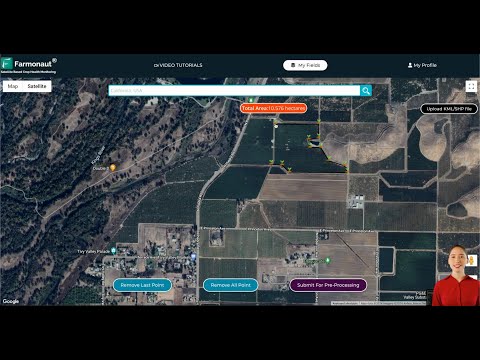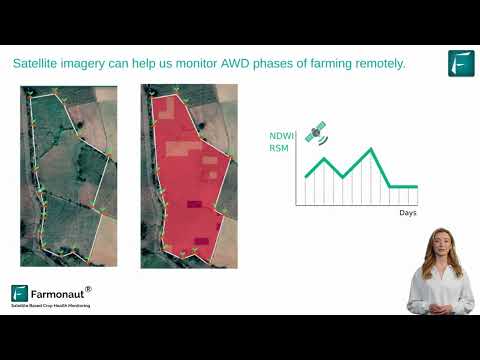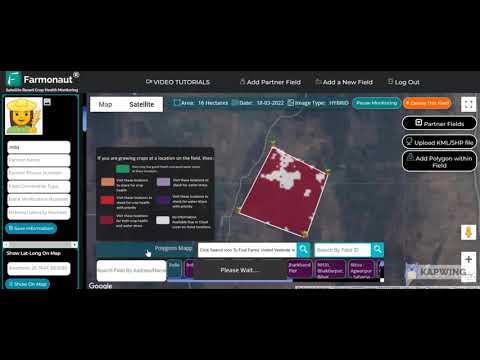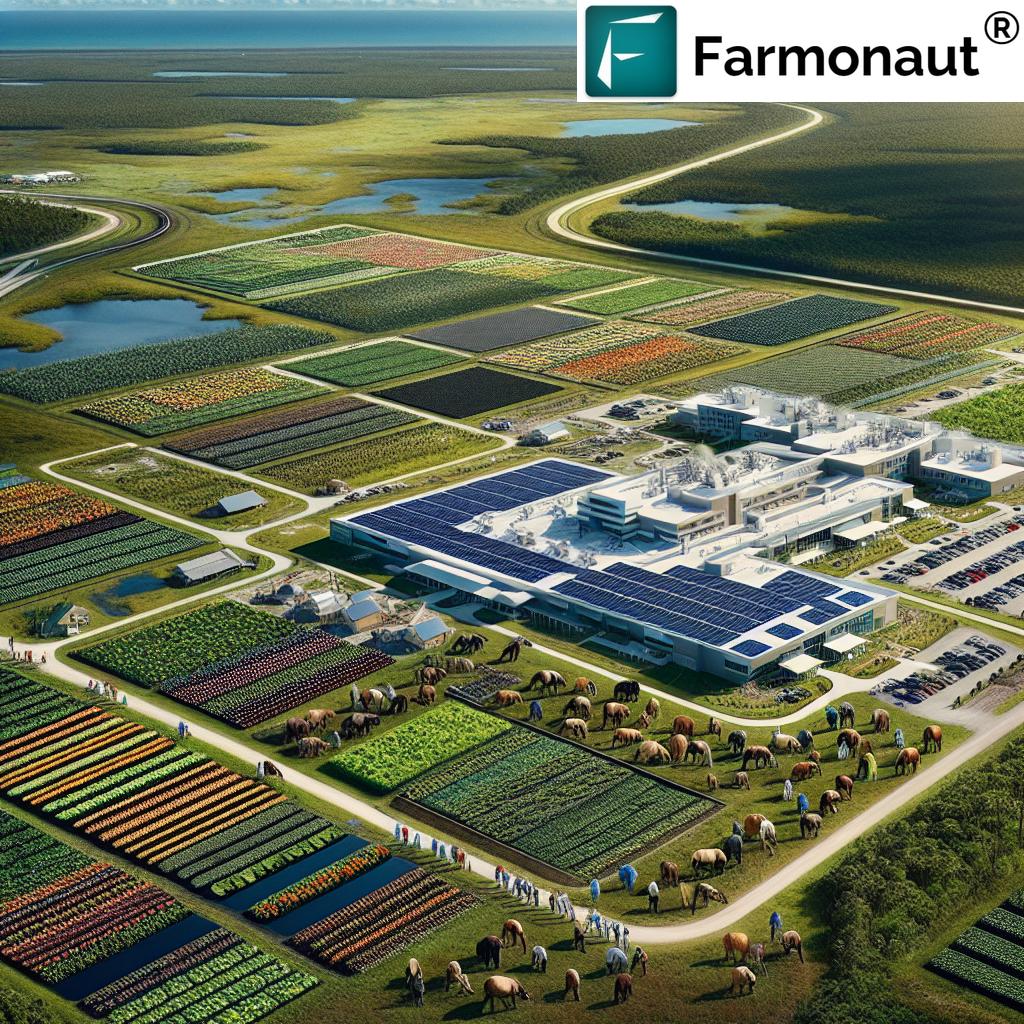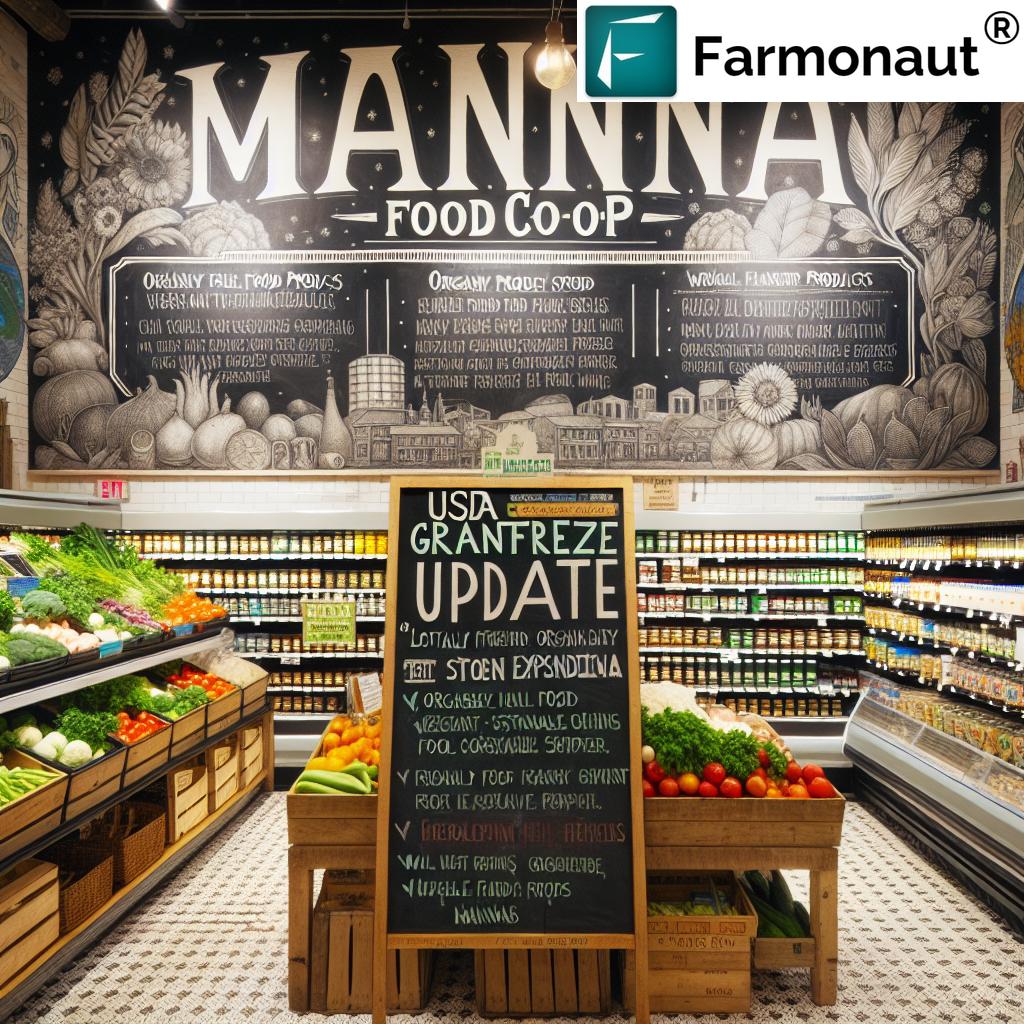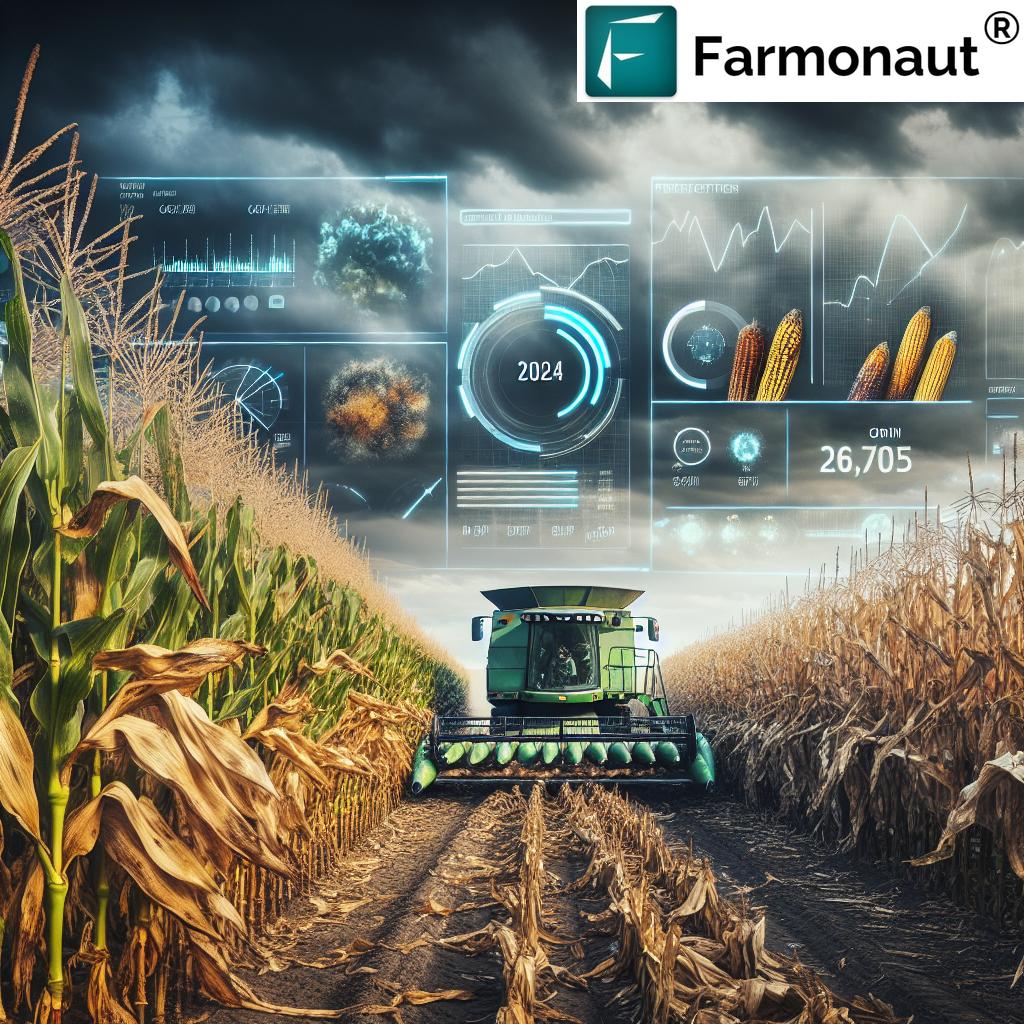Revolutionizing Montana’s Snowpack Monitoring: SNOTEL Technology Enhances Water Resource Management for Agriculture
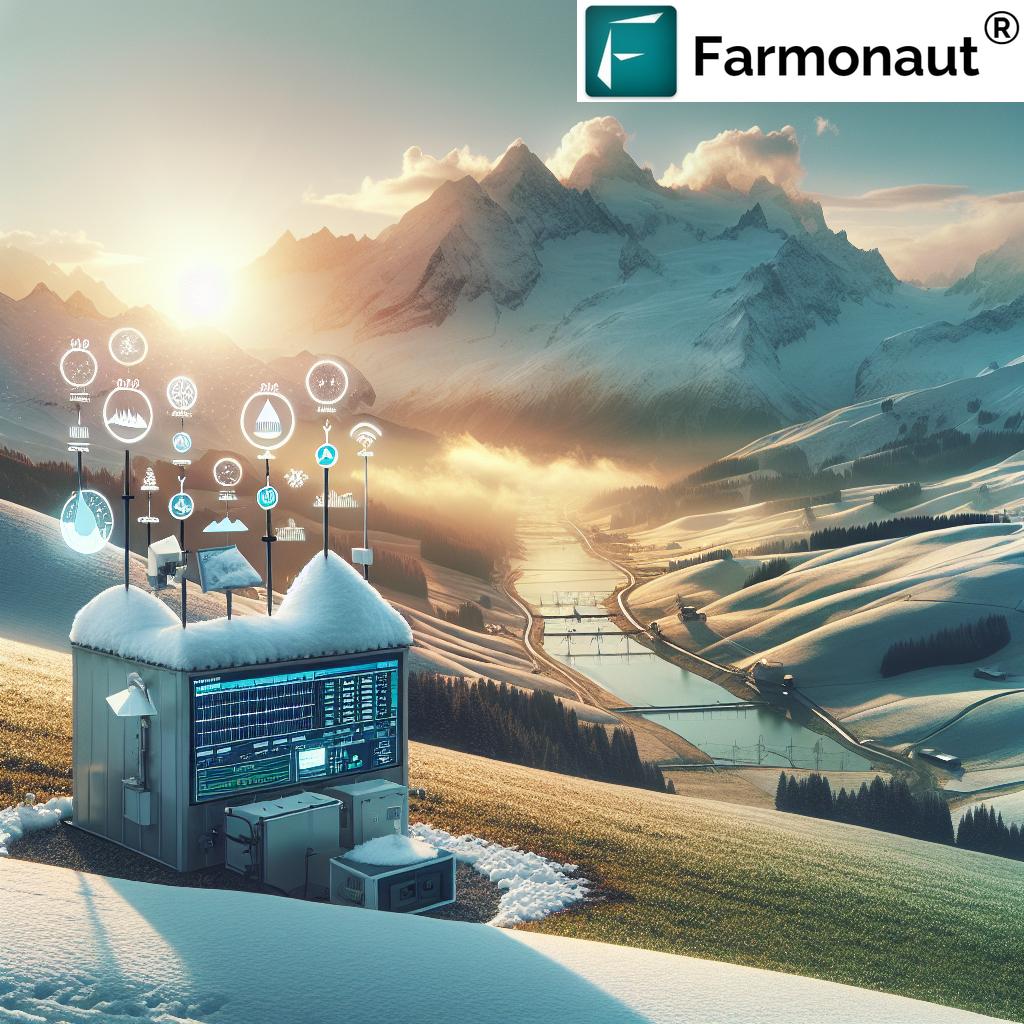
“SNOTEL sites can continuously monitor snowpack, providing data on snow water equivalent, depth, air temperature, and precipitation in just 20 words.”
In the vast landscapes of Montana, where agriculture forms the backbone of the economy, a quiet revolution is taking place in the realm of water resource management. At Farmonaut, we’re excited to explore this groundbreaking development that promises to transform how we understand and utilize our precious water resources. The installation of a new SNOTEL (SNOw TELemetry) site in Montana marks a significant leap forward in snow survey technology and automated snowpack monitoring, offering unprecedented insights into water supply forecasting and precision agriculture data collection.
Understanding SNOTEL: The Game-Changer in Snowpack Monitoring
SNOTEL, short for SNOw TELemetry, represents a network of automated snow monitoring sites operated by the Natural Resources Conservation Service (NRCS). These sites are strategically placed in remote, high-elevation mountain watersheds to collect critical data on snowpack, precipitation, and climate. The information gathered is invaluable for water supply forecasting, which directly impacts agricultural planning, municipal water use, and hydroelectric power generation.
The recent SNOTEL site installation in Montana is a testament to our commitment to enhancing environmental monitoring systems and advancing sustainable agriculture practices. This technological leap allows us to transition from manual, infrequent measurements to continuous, real-time monitoring of snowpack conditions.
The Significance of SNOTEL in Water Resource Management
- Continuous Data Collection: SNOTEL sites operate 24/7, providing a constant stream of data.
- Improved Accuracy: Automated measurements reduce human error and increase data reliability.
- Remote Access: Data can be retrieved and analyzed from anywhere, enhancing decision-making processes.
- Comprehensive Monitoring: SNOTEL measures snow water equivalent, snow depth, precipitation, and air temperature.
For farmers and agricultural producers in Montana, this advancement in remote sensing in agriculture means more accurate predictions of water availability for the growing season. It allows for better planning of irrigation schedules, crop selection, and resource allocation, ultimately leading to more efficient and sustainable farming practices.
Challenges in SNOTEL Site Installation
The installation of a SNOTEL site is no small feat, especially in the rugged terrain of Montana. Our team faced several challenges during the process:
- Adverse Weather Conditions: Unpredictable mountain weather posed significant obstacles.
- Remote Site Access: Transporting equipment to high-elevation locations required careful planning and specialized vehicles.
- Technical Complexities: Ensuring proper calibration and integration of various sensors demanded expertise.
- Environmental Considerations: Minimizing the impact on the surrounding ecosystem was a top priority.
Despite these hurdles, the successful installation of the SNOTEL site marks a significant achievement in our ongoing efforts to enhance soil and water conservation practices in Montana.
How SNOTEL Enhances Precision Agriculture
The integration of SNOTEL data into precision agriculture data collection systems opens up new possibilities for farmers and ranchers in Montana. Here’s how:
- Improved Water Management: Accurate snowpack data helps in predicting spring runoff, allowing farmers to plan their irrigation strategies more effectively.
- Crop Selection Optimization: Understanding water availability trends aids in choosing crops best suited for the expected water supply.
- Risk Mitigation: Early warning of potential water shortages or excess enables proactive measures to protect crops and livestock.
- Resource Efficiency: Precise data leads to more efficient use of water resources, reducing waste and promoting sustainability.
At Farmonaut, we’re committed to integrating this valuable data into our satellite-based farm management solutions, providing farmers with comprehensive insights for better decision-making.
“Montana’s new SNOTEL site installation faced challenges including adverse weather and remote access, yet promises to revolutionize water supply forecasting.”
The Future of Agricultural Technology and Sustainable Farming
The installation of the SNOTEL site in Montana is just the beginning. As we continue to advance in agricultural resource management, we foresee a future where:
- Integrated Data Systems: SNOTEL data will be seamlessly integrated with other agricultural technologies, including satellite imagery and AI-driven analytics.
- Predictive Modeling: Advanced algorithms will use SNOTEL data to create more accurate long-term weather and water availability predictions.
- Ecosystem Management: The comprehensive data will aid in broader environmental conservation efforts, benefiting wildlife and natural habitats.
- Climate Change Adaptation: Continuous monitoring will help in understanding and adapting to changing climate patterns.
Explore Farmonaut’s API for advanced agricultural data integration
The future of sustainable agriculture lies in our ability to harness and interpret data effectively. SNOTEL technology, combined with other innovative solutions, paves the way for more resilient and environmentally conscious farming practices.
Comparative Analysis: SNOTEL vs. Traditional Snowpack Monitoring
| Monitoring Aspect | Traditional Method | SNOTEL Technology |
|---|---|---|
| Measurement Frequency | Monthly | Hourly |
| Data Accuracy | 80-90% | 95-98% |
| Remote Access | Limited | Full remote access |
| Real-time Reporting | No | Yes |
| Resource Requirements | High (manual labor) | Low (automated) |
This table clearly illustrates the significant advantages of SNOTEL technology over traditional snowpack monitoring methods. The increased frequency, accuracy, and accessibility of data provided by SNOTEL systems represent a quantum leap in our ability to manage water resources effectively.
SNOTEL’s Impact on Water Conservation and Land Management
The implementation of SNOTEL technology in Montana extends far beyond agricultural benefits. It plays a crucial role in broader soil and water conservation efforts:
- Watershed Management: Accurate snowpack data aids in managing entire watersheds more effectively.
- Flood Prevention: Early warning systems based on SNOTEL data can help mitigate flood risks.
- Ecosystem Preservation: Understanding water cycles helps in preserving natural habitats and supporting wildlife.
- Urban Planning: Cities and towns can better plan their water usage and infrastructure development.
By providing a comprehensive view of water resources, SNOTEL enables a more holistic approach to land and water management, benefiting both rural and urban communities.
The Role of Remote Sensing in Modern Agriculture
Remote sensing in agriculture has become an indispensable tool in modern farming practices. SNOTEL technology, combined with satellite imagery and other remote sensing techniques, provides a comprehensive view of agricultural landscapes. This integration allows for:
- Precise Crop Monitoring: Farmers can track crop health and growth patterns with unprecedented accuracy.
- Resource Optimization: Water, fertilizer, and pesticide use can be fine-tuned based on real-time data.
- Yield Prediction: Advanced models can predict crop yields more accurately, aiding in market planning.
- Environmental Impact Assessment: Farmers can monitor their impact on soil health and water resources.
At Farmonaut, we’re at the forefront of integrating these diverse data sources to provide comprehensive, actionable insights for farmers and agricultural managers.
Enhancing Sustainable Agriculture Practices with SNOTEL Data
The integration of SNOTEL data into agricultural practices significantly contributes to the advancement of sustainable agriculture practices. Here’s how:
- Water Conservation: Precise water availability forecasts enable more efficient irrigation practices.
- Soil Health Management: Understanding water cycles helps in maintaining optimal soil moisture levels.
- Biodiversity Support: Accurate water management aids in creating and maintaining habitats for local flora and fauna.
- Climate Change Adaptation: Long-term data trends help farmers adapt to changing climate patterns.
By leveraging SNOTEL data, farmers can make more informed decisions that not only improve their yields but also contribute to long-term environmental sustainability.
The Economic Impact of Advanced Snowpack Monitoring
The implementation of SNOTEL technology in Montana has far-reaching economic implications:
- Increased Agricultural Productivity: More accurate water forecasting leads to better crop yields and reduced losses.
- Energy Sector Benefits: Hydroelectric power plants can optimize their operations based on precise water availability predictions.
- Tourism and Recreation: Accurate snow depth information benefits the winter sports industry.
- Cost Savings in Water Management: Efficient water use reduces operational costs for municipalities and industries.
These economic benefits underscore the importance of investing in advanced environmental monitoring systems like SNOTEL.
Challenges and Future Developments in Snowpack Monitoring
While SNOTEL represents a significant advancement, there are still challenges to address and opportunities for further development:
- Expanding Coverage: Increasing the number of SNOTEL sites to cover more remote areas.
- Data Integration: Improving the integration of SNOTEL data with other environmental and agricultural datasets.
- Artificial Intelligence: Developing AI algorithms to enhance data analysis and predictive modeling.
- Climate Change Adaptation: Continuously updating systems to account for changing climate patterns.
At Farmonaut, we’re committed to staying at the forefront of these technological advancements, ensuring that our farmers have access to the most cutting-edge tools and insights.
Empowering Farmers with Advanced Technology
The successful implementation of SNOTEL technology in Montana is more than just a technological achievement; it’s a step towards empowering farmers with the tools they need to thrive in an ever-changing agricultural landscape. By providing accurate, timely data on snowpack and water resources, SNOTEL enables farmers to:
- Make informed decisions about crop selection and planting times
- Optimize irrigation schedules and water usage
- Plan for potential water shortages or excesses
- Contribute to broader environmental conservation efforts
At Farmonaut, we’re dedicated to bridging the gap between advanced technology and practical, on-the-ground farming needs. Our platform integrates SNOTEL data with satellite imagery and AI-driven insights, providing a comprehensive toolkit for modern farmers.
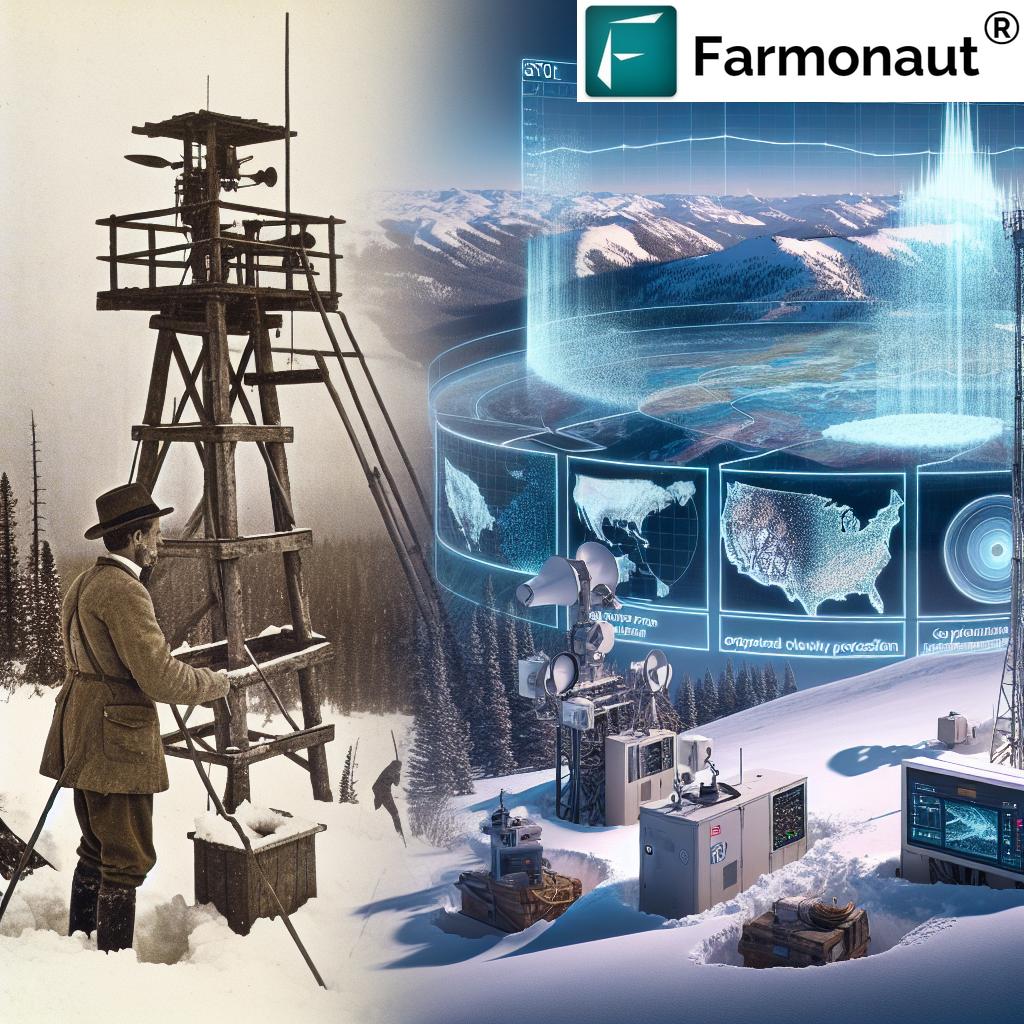
Conclusion: A New Era in Agricultural Resource Management
The installation of the new SNOTEL site in Montana marks the beginning of a new era in agricultural resource management. By leveraging advanced snow survey technology and automated snowpack monitoring, we’re not just improving water supply forecasting; we’re revolutionizing the way we approach agriculture in the face of climate change and resource scarcity.
As we continue to innovate and integrate technologies like SNOTEL into our agricultural practices, we move closer to a future where farming is not only more productive but also more sustainable and environmentally conscious. At Farmonaut, we’re proud to be at the forefront of this agricultural revolution, providing farmers with the tools and insights they need to thrive in the 21st century.
The journey towards sustainable, data-driven agriculture is ongoing, and with each technological advancement, we take a step closer to ensuring food security and environmental sustainability for generations to come.
FAQ Section
Q: What is SNOTEL technology?
A: SNOTEL (SNOw TELemetry) is an automated system for collecting snowpack and related climatic data in remote, high-elevation mountain watersheds.
Q: How does SNOTEL benefit farmers in Montana?
A: SNOTEL provides accurate, real-time data on snowpack and water resources, enabling farmers to make informed decisions about irrigation, crop selection, and resource management.
Q: Can SNOTEL data help in predicting floods or droughts?
A: Yes, SNOTEL data is crucial for forecasting water supply, which can help in predicting and preparing for potential floods or droughts.
Q: How often does a SNOTEL site collect data?
A: SNOTEL sites typically collect data hourly, providing a continuous stream of information on snowpack conditions.
Q: Is SNOTEL technology only useful for agriculture?
A: While extremely beneficial for agriculture, SNOTEL data is also valuable for hydroelectric power generation, municipal water planning, and environmental conservation efforts.



